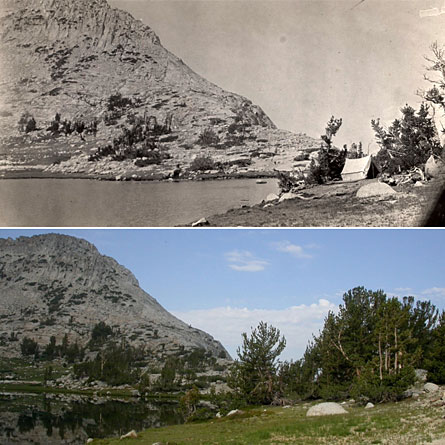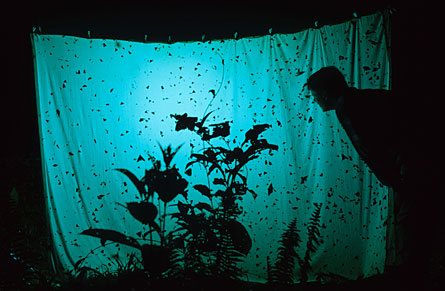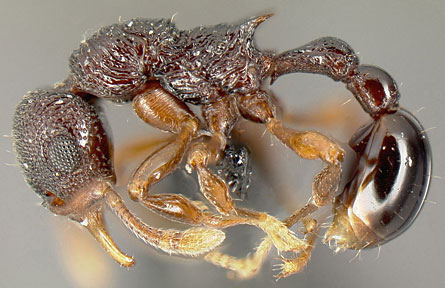Normal 0 false false false MicrosoftInternetExplorer4 Chipmunks, mice and other small mammals pretty much moved up in the world as YosemiteNational Park’s climate warmed during the last century.
As temperatures rose, these species tended to edge upward to higher and cooler ground, says Craig Moritz, director of the Museum of Vertebrate Zoology in Berkeley, Calif.



The possibility that climate change is pushing around sensitive species has been worrying biologists, so Moritz and his colleagues found a way to test the idea over an unusually long time. They resurrected the museum’s trove of field notes and revisted sites of a mammal survey that started in 1914.
Tropical biologists are still describing lots of new species and often don’t have such luxurious long-term data, says Robert Colwell of the University of Connecticut in Storrs. So he and his colleagues estimated the risks of range shifts in plants and insects based on a recent survey of biodiversity in Costa Rica.
Rising temperatures that push species uphill could suck some of the current native biodiversity out of the tropical lowlands, Colwell and his colleagues warn. Their paper and the Yosemite study both appear in the Oct. 10 Science.
European scientists have found long-term data sets to check for species shifts, so Moritz says he was delighted to work out a way to use a rich record in California too.
From 1914 through 1920, pioneering ecologist Joseph Grinnell painstakingly surveyed small mammals along a line, or transect, running through YosemiteNational Park over the mountains and covering elevations from 60 to 3,300 meters. Grinnell’s detailed notes let Moritz and colleagues find the same or comparable sites and apply modern statistical methods to the data.
Since Grinnell’s time, the region’s monthly average minimum temperatures have risen about 3 degrees Celsius. Today’s surveyors put together enough details to see if that warming correlated with a rise in the upper ends of the ranges of 28 small mammal species.
Overall, species’ range limits seemed to have crept up the slopes, Moritz and his colleagues reported. But some creatures, such as the deer mouse, didn’t seem to have moved, and a few even retreated a bit.
“This opens up a lot of questions in community ecology,” Moritz says. For one thing, he would like to know why the pinyon mouse seems to have shifted upward when the deer mouse apparently hasn’t.
Jonathan Lenoir, who has been studying plant range shifts in European mountains, says he would like to know whether there’s a difference in sensitivity to temperature between low-elevation and high-elevation mammal species in the Yosemite study. “I find it really amazing that they resurveyed the Joseph Grinnell elevation transect,” says Lenoir, of AgroParisTech in Nancy, France.
Grinnell’s copious old notes provided an unusually strong basis for re-surveying, comments Richard Condit of the Smithsonian Tropical Research Institute in Panama. He welcomes the Yosemite study for its data and the Costa Rica one for its ideas. The Costa Rica study’s discussion of a possible risk of attrition among lowland species is a new angle on climate change in the tropics, Condit says.
Such attrition could develop, Colwell explains, because average temperatures at a particular elevation don’t change much across the tropics. At other latitudes, species shifting up a slope merely clear the way for neighbors from warmer zones to move in behind them. For the tropics, though, there’s no warmer zone to supply warm-adapted neighbors.
Colwell is not predicting a barren landscape, but a loss of current diversity. “I expect the lowlands to get simplified,” he says.
To get a rough sense of the risk, Colwell and his colleagues estimated ranges from transect samples of four species groups — ants, geometrid moths, members of the coffee family and plants growing on tree branches. According to these records, about half have such narrow ranges now that they may have to colonize a completely new zone if temperatures increase as predicted.
Condit protests that lots of factors besides temperature draw borders for a species, so there’s no way to know just from current ranges what warming will do to species.
“This is crude, and we acknowledge that in the paper,” Colwell says. He adds that he hopes this first pass at the problem will lead to more experiments — and inspire conservationists to protect corridors for species to migrate upward in case the worst does come to pass.






